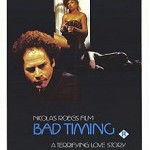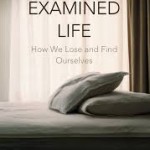 We watched the potato harvesters at work out at Bertem today. A huge, sophisticated machine pulled, cleaned and graded the potatoes before depositing them in a waiting truck. The owner of the fields (more an entrepreneur than a farmer) explained that the lorries took their loads off to a nearby processing plant where, within the day still, they would have been washed, peeled, chipped, packed and frozen. Because the potatoes were grown to be transformed into chips, the machine rejected anything beneath a certain length. These were ejected onto the soil, where they would be ploughed back into the earth and recycled as biomass. We asked if we could pick up some of the potatoes. Of course, the farmer replied. One of his drivers produced a plastic bag for us and we picked about six kilos’ worth of perfectly consumable potatoes – indeed, they were cooked and eaten within days. Not for the first time, I wondered about the way we order our lives. Why could the sophisticated machine not send the reject potatoes into another container, so that they could be sold (or, better, given away) and hence consumed, rather than effectively being thrown away?
We watched the potato harvesters at work out at Bertem today. A huge, sophisticated machine pulled, cleaned and graded the potatoes before depositing them in a waiting truck. The owner of the fields (more an entrepreneur than a farmer) explained that the lorries took their loads off to a nearby processing plant where, within the day still, they would have been washed, peeled, chipped, packed and frozen. Because the potatoes were grown to be transformed into chips, the machine rejected anything beneath a certain length. These were ejected onto the soil, where they would be ploughed back into the earth and recycled as biomass. We asked if we could pick up some of the potatoes. Of course, the farmer replied. One of his drivers produced a plastic bag for us and we picked about six kilos’ worth of perfectly consumable potatoes – indeed, they were cooked and eaten within days. Not for the first time, I wondered about the way we order our lives. Why could the sophisticated machine not send the reject potatoes into another container, so that they could be sold (or, better, given away) and hence consumed, rather than effectively being thrown away?
Page 2 of 209
Illness is a great leveller. Today, I found myself in the Clinique St Jean, opposite the Jardin Botanique. I won’t say I enjoy going to hospitals – on the contrary – but if and when I do have to go I particularly like this inner-city relic of a smaller, more human Brussels. Like most hospitals, it began its life as an offshoot of a convent, close to the cathedral. In the hospital’s heyday, the church was a powerful patron and in the 1950s and 1960s, the cardiology department (for example) was equipped with state-of-the-art scanners and other medical equipment which put St Jean at the forefront of Belgian and European medical practice. Decline inevitably set in, as the great university hospitals (the ULB’s Erasmus, the UCL’s St Luc) developed their specialised, out-of-city, campus sites and made their ever-more competitive bids for public funding. At the same time, as the city centre emptied out and immigration took its place, St Jean serviced an ever-less well-resourced population and could no longer fight so effectively for a front-line place in research, though it still holds its own. And that’s one reason why I like going there, through its subterranean warren of corridors, up and down its secret staircases (over the years I have got to know them all well), waiting alongside today’s true Bruxellois. The medical and administrative staff are just as efficient and friendly as they might be anywhere else and whenever I go there I sense a true feeling of community, maybe because this hospital is still rooted in the fabric of the city it serves.
 There are periods out in the fields around Brussels, periods presaging the great annual migrations, when the fields seem full of flocks. The birds mass expectantly, nervously. They start up in alarm and flap around disjointedly before settling again. And then there are periods, like the current one, when the fields are full of flocks for a different reason; the farmers have started harvesting their corn, and the fields are full of crows, geese, lapwings, pigeons and many other species, all gorging themselves on the grain left in the earth. These birds are less nervous. They don’t start up at the slightest sound and they settle much more rapidly. I suppose it could be argued that by stocking up in this way they are also presaging the migratory flows to come. As such, they add a wistful note to the landscape; autumn is well on the way.
There are periods out in the fields around Brussels, periods presaging the great annual migrations, when the fields seem full of flocks. The birds mass expectantly, nervously. They start up in alarm and flap around disjointedly before settling again. And then there are periods, like the current one, when the fields are full of flocks for a different reason; the farmers have started harvesting their corn, and the fields are full of crows, geese, lapwings, pigeons and many other species, all gorging themselves on the grain left in the earth. These birds are less nervous. They don’t start up at the slightest sound and they settle much more rapidly. I suppose it could be argued that by stocking up in this way they are also presaging the migratory flows to come. As such, they add a wistful note to the landscape; autumn is well on the way.
 To Arlon this evening for a vernissage. Although it had a mainly Luxemburgish population, Arlon was not absorbed into the new Duchy of Luxembourg but, rather, became the capital city of the Belgian Luxembourg region. As such, it became primarily Francophone, although many of the local place names have retained their original Germanic resonance. The Sherman tank monument parked in front of the town hall recalls Arlon’s fate as a frontier town during the two World Wars but also during the earlier interminable struggles between the Dutch, the Spanish and the French. Whatever its geopolitical circumstances, nowdays many of Arlon’s inhabitants drive across the frontier to jobs in Luxembourg. The vernissage, of the work of a young local illustrator and designer, Alexis Vandersmissen, was a great success.
To Arlon this evening for a vernissage. Although it had a mainly Luxemburgish population, Arlon was not absorbed into the new Duchy of Luxembourg but, rather, became the capital city of the Belgian Luxembourg region. As such, it became primarily Francophone, although many of the local place names have retained their original Germanic resonance. The Sherman tank monument parked in front of the town hall recalls Arlon’s fate as a frontier town during the two World Wars but also during the earlier interminable struggles between the Dutch, the Spanish and the French. Whatever its geopolitical circumstances, nowdays many of Arlon’s inhabitants drive across the frontier to jobs in Luxembourg. The vernissage, of the work of a young local illustrator and designer, Alexis Vandersmissen, was a great success.
 It is extraordinary to think that Nic Roeg’s 1980 film, Bad Timing, was suppressed for over twenty years by its distributor. By the time he made this film Roeg had a string of strong and iconoclastic films under his belt: Performance (1968, but only released in 1970), Walkabout (1971), Don’t Look Now (1973) and The Man Who Fell to Earth (1976). Considered a visionary firebrand, Roeg did not shy away from what were then considered ‘controversial’ topics, such as the cross-dressing, gender dismorphia and sadistic violence in Performance that led to its release being delayed by two years. After the sensual and decadent Mick Jagger in Performance and the androgynous David Bowie in The Man Who Fell to Earth, Bad Timing was Roeg’s third film with the main character played by a pop/rock star and not a professional actor – on this occasion the handsomely intense Art Garfunkel, playing psychology professor Alex Linden. Set in a Vienna still steeped in Cold War atmosphere (that oppressive sense of massed force on the horizon), the film depicts, through flash-backs and -forwards, Linden’s increasingly obsessive infatuation with a free-spirited and already-married depressive, Milena Flaherty (brilliantly played by Theresa Russell – and Denham Elliott is excellent as her wistful and wise husband). The film starts with Flaherty’s possible end, sprawled on a hospital trolley after an overdose. The Austrian police inspector Netusil, excellently played by Harvey Keitel (and an antidote to his other 1970 film, Saturn 3) is at first bemused and then intrigued by Alex Linden’s evasiveness and argumentativeness when questioned about his relationship with Milena. Thus ripened for suspicion, his suspicions are duly aroused by the bad timing of a radio programme in Linden’s account of his evening. Gradually, we, and Netusil, get nearer to Linden’s awful truth… Garfunkel and Russell turned in the most intense of performances. Describing it as ‘a sick film made by sick people for sick people’ the distributor, Rank, briefly released it and then locked it away. (The story is well told in this article. Was the film and its subject matter really so much more shocking than, say, Liliana Cavani’s 1974 Night Porter?) How terribly, terribly frustrating for the cast – particularly Garfunkel and Russell – and the director to create something close to a masterpiece and then have it lost in that way! As Roeg said in an interview, it’s not the same for people to talk about the film now…
It is extraordinary to think that Nic Roeg’s 1980 film, Bad Timing, was suppressed for over twenty years by its distributor. By the time he made this film Roeg had a string of strong and iconoclastic films under his belt: Performance (1968, but only released in 1970), Walkabout (1971), Don’t Look Now (1973) and The Man Who Fell to Earth (1976). Considered a visionary firebrand, Roeg did not shy away from what were then considered ‘controversial’ topics, such as the cross-dressing, gender dismorphia and sadistic violence in Performance that led to its release being delayed by two years. After the sensual and decadent Mick Jagger in Performance and the androgynous David Bowie in The Man Who Fell to Earth, Bad Timing was Roeg’s third film with the main character played by a pop/rock star and not a professional actor – on this occasion the handsomely intense Art Garfunkel, playing psychology professor Alex Linden. Set in a Vienna still steeped in Cold War atmosphere (that oppressive sense of massed force on the horizon), the film depicts, through flash-backs and -forwards, Linden’s increasingly obsessive infatuation with a free-spirited and already-married depressive, Milena Flaherty (brilliantly played by Theresa Russell – and Denham Elliott is excellent as her wistful and wise husband). The film starts with Flaherty’s possible end, sprawled on a hospital trolley after an overdose. The Austrian police inspector Netusil, excellently played by Harvey Keitel (and an antidote to his other 1970 film, Saturn 3) is at first bemused and then intrigued by Alex Linden’s evasiveness and argumentativeness when questioned about his relationship with Milena. Thus ripened for suspicion, his suspicions are duly aroused by the bad timing of a radio programme in Linden’s account of his evening. Gradually, we, and Netusil, get nearer to Linden’s awful truth… Garfunkel and Russell turned in the most intense of performances. Describing it as ‘a sick film made by sick people for sick people’ the distributor, Rank, briefly released it and then locked it away. (The story is well told in this article. Was the film and its subject matter really so much more shocking than, say, Liliana Cavani’s 1974 Night Porter?) How terribly, terribly frustrating for the cast – particularly Garfunkel and Russell – and the director to create something close to a masterpiece and then have it lost in that way! As Roeg said in an interview, it’s not the same for people to talk about the film now…
 During this morning’s Farming Today programme on BBC Radio 4 I heard an interesting but slightly shocking interview with a carrot farmer. He was being interviewed about his harvest. The journalist remarked that his machine seemed to have left a lot of carrots in the ground. The farmer explained that he had used a machine that pulled the carrots up out of the ground by their heads. If the heads were weak, then they snapped off, hence all of those carrots still in the ground. If too many of the carrot heads snapped off then he used a different machine, that dug under the roots and lifted them out. But the head-pulling machine delivered cleaner carrots and was therefore preferable. Couldn’t the machine be followed up by labourers who would pick up the remaining carrots, asked the journalist? In an ideal world, yes, replied the farmer, but the economics are just not right. Each vegetable’s value can be measured in pennies; it just isn’t worth it. In conclusion, therefore, between one and two per cent of his carrot crop gets ploughed back into the earth to contribute to the biomass, so the rejected carrots aren’t entirely wasted. All the same! An awful lot of attention has been paid to food waste in institutions and organisations. Strict laws governing the re-use of food have led to a new approach to planning so as to minimise waste. Meanwhile… I suppose it could be contrarily argued that sophisticated mechanisation has led to very high harvests. But as readers of this blog will know, I have often wondered about the quantitites of potatoes left in the soil out at Bertem after each harvest. To old-fashioned me it just seems like a waste. As I understand it, the European Commission is currently working on a Communication on the “Sustainability of food systems”, which is expected to be published at the beginning of 2014. As part of the “Roadmap to a resource–efficient Europe”, the Communication will, inter alia, consider how to limit food waste across the food supply chain, as well as how to reduce the environmental impact of food production and consumption. So watch this space!
During this morning’s Farming Today programme on BBC Radio 4 I heard an interesting but slightly shocking interview with a carrot farmer. He was being interviewed about his harvest. The journalist remarked that his machine seemed to have left a lot of carrots in the ground. The farmer explained that he had used a machine that pulled the carrots up out of the ground by their heads. If the heads were weak, then they snapped off, hence all of those carrots still in the ground. If too many of the carrot heads snapped off then he used a different machine, that dug under the roots and lifted them out. But the head-pulling machine delivered cleaner carrots and was therefore preferable. Couldn’t the machine be followed up by labourers who would pick up the remaining carrots, asked the journalist? In an ideal world, yes, replied the farmer, but the economics are just not right. Each vegetable’s value can be measured in pennies; it just isn’t worth it. In conclusion, therefore, between one and two per cent of his carrot crop gets ploughed back into the earth to contribute to the biomass, so the rejected carrots aren’t entirely wasted. All the same! An awful lot of attention has been paid to food waste in institutions and organisations. Strict laws governing the re-use of food have led to a new approach to planning so as to minimise waste. Meanwhile… I suppose it could be contrarily argued that sophisticated mechanisation has led to very high harvests. But as readers of this blog will know, I have often wondered about the quantitites of potatoes left in the soil out at Bertem after each harvest. To old-fashioned me it just seems like a waste. As I understand it, the European Commission is currently working on a Communication on the “Sustainability of food systems”, which is expected to be published at the beginning of 2014. As part of the “Roadmap to a resource–efficient Europe”, the Communication will, inter alia, consider how to limit food waste across the food supply chain, as well as how to reduce the environmental impact of food production and consumption. So watch this space!
 Music is a great consolation when times are hard or the going is tough. As I wrote in a previous post, recently, I treated myself to a box set of Joni Mitchell‘s albums. What an extraordinary lady she is, and how gifted! Who would have imagined the hardships and privations she knew (a polio sufferer in childhood), and who, apart from her devoted followers, is aware that she prefers her art and poetry to her composing and performing? As I listened through her restless swings of taste and style from folk to blues to jazz to pop and back, I was reminded of the course of another favourite of mine, David Bowie, who has never ceased to explore new musical forms and has certainly never stayed in the same place for more than one album and is also an accomplished artist. And so it was, through sheer serendipity, that I discovered a possible subliminal inspiration of the one for the other. At the end of Joni’s Conversation, there is a doo-be-doo chorus with a sax (around 3.45). Now listen to Lou Reed’s Transformer (produced by David Bowie) and you will hear a similar doo-be-doo chorus with a sax (around 3.20). Since Bowie is notoriously catholic in his tastes and a constant explorer, I would like to believe that Conversation (1970) might have been a subliminal source of inspiration for Bowie’s production of Lou Reed’s Walk on the Wild Side (1972). If you come across this post maybe you’d like to comment, David? (Only dreaming…)
Music is a great consolation when times are hard or the going is tough. As I wrote in a previous post, recently, I treated myself to a box set of Joni Mitchell‘s albums. What an extraordinary lady she is, and how gifted! Who would have imagined the hardships and privations she knew (a polio sufferer in childhood), and who, apart from her devoted followers, is aware that she prefers her art and poetry to her composing and performing? As I listened through her restless swings of taste and style from folk to blues to jazz to pop and back, I was reminded of the course of another favourite of mine, David Bowie, who has never ceased to explore new musical forms and has certainly never stayed in the same place for more than one album and is also an accomplished artist. And so it was, through sheer serendipity, that I discovered a possible subliminal inspiration of the one for the other. At the end of Joni’s Conversation, there is a doo-be-doo chorus with a sax (around 3.45). Now listen to Lou Reed’s Transformer (produced by David Bowie) and you will hear a similar doo-be-doo chorus with a sax (around 3.20). Since Bowie is notoriously catholic in his tastes and a constant explorer, I would like to believe that Conversation (1970) might have been a subliminal source of inspiration for Bowie’s production of Lou Reed’s Walk on the Wild Side (1972). If you come across this post maybe you’d like to comment, David? (Only dreaming…)
 The family have been getting into Borgen, the Danish political drama television series. It’s well-produced and well acted. Sidse Babett Knudsen, who plays the charismatic Moderate Party leader suddenly catapulted into the Prime Ministership, is particularly good, though she reminds me more of Segolene Royal than Helle Thorning-Schmidt (a perhaps deliberate conflation in the casting?). The series is definitely not a good advertisement for coalition governments, with far too many tails wagging the dog, and it has been widely praised for its authenticity. It is good entertainment, I suppose, but I would prefer The West Wing any day, sugary schmalzy though it undoubtedly is. The scriptwriters of the latter deliberately created ethical and moral dilemmas on both greater and smaller issues, and much of the success of the series was down to the tensions between the two, and between idealism and realism. Yes, there was cynicism and there were cynics, and high politics was frequently getting captured by base motives and sheer events but, nevertheless, there was no doubting the underlying moral and political forces at work (and I don’t mean those lapses into schmalz). Its fans would argue that Borgen is not so different, but I think there’s more emphasis on the cynicism than the idealism and I see that as a shame. And we have to wait till the second series to get to an episode where the political (green) issues are really at the heart of the story. Politics and our politicians have taken such a battering over the past decade or so and yet our democracies continue to be predicated on their existence. If civics and political philosophy were obligatory courses at school then it would matter slightly less, but many of today’s voters only get their political education from such series.
The family have been getting into Borgen, the Danish political drama television series. It’s well-produced and well acted. Sidse Babett Knudsen, who plays the charismatic Moderate Party leader suddenly catapulted into the Prime Ministership, is particularly good, though she reminds me more of Segolene Royal than Helle Thorning-Schmidt (a perhaps deliberate conflation in the casting?). The series is definitely not a good advertisement for coalition governments, with far too many tails wagging the dog, and it has been widely praised for its authenticity. It is good entertainment, I suppose, but I would prefer The West Wing any day, sugary schmalzy though it undoubtedly is. The scriptwriters of the latter deliberately created ethical and moral dilemmas on both greater and smaller issues, and much of the success of the series was down to the tensions between the two, and between idealism and realism. Yes, there was cynicism and there were cynics, and high politics was frequently getting captured by base motives and sheer events but, nevertheless, there was no doubting the underlying moral and political forces at work (and I don’t mean those lapses into schmalz). Its fans would argue that Borgen is not so different, but I think there’s more emphasis on the cynicism than the idealism and I see that as a shame. And we have to wait till the second series to get to an episode where the political (green) issues are really at the heart of the story. Politics and our politicians have taken such a battering over the past decade or so and yet our democracies continue to be predicated on their existence. If civics and political philosophy were obligatory courses at school then it would matter slightly less, but many of today’s voters only get their political education from such series.
 As a sort of antidote to Robert Hare’s Without Conscience, I have just read Stephen Grosz’s The Examined Life: How We Lose and Find Ourselves. A respected and experienced psychoanalyst, Grosz serves up in thirty-one relatively short chapters anonymised accounts of patients illustrating particular themes, such as beginnings, lies, loving, changing and leaving. There is no general conclusion, but each account is rounded off with an observation or a supposition on Grosz’s part, and he, as the psychoanalyst, is happy to draw himself and his own experiences into the story. There is, in particular, a touching story about how his father, a Holocaust survivor, had difficulty in revisiting his roots. (There is a good review of the book by Alexander Linklater here.) Despite the lack of any didactic approach, I learned a great deal from this book; about how there cannot be change without loss, about how every separation is also a link, about how we try to make sense of our lives through stories, and about how winning is also losing. This is my favourite passage in the book: ‘Psychoanalysts are fond of pointing out that the past is alive in the present. But the future is alive in the present too. The future is not some place we’re going to, but an idea in our mind now. It is something we’re creating, that in turn creates us. The future is a fantasy that shapes our present.’ (p. 157)
As a sort of antidote to Robert Hare’s Without Conscience, I have just read Stephen Grosz’s The Examined Life: How We Lose and Find Ourselves. A respected and experienced psychoanalyst, Grosz serves up in thirty-one relatively short chapters anonymised accounts of patients illustrating particular themes, such as beginnings, lies, loving, changing and leaving. There is no general conclusion, but each account is rounded off with an observation or a supposition on Grosz’s part, and he, as the psychoanalyst, is happy to draw himself and his own experiences into the story. There is, in particular, a touching story about how his father, a Holocaust survivor, had difficulty in revisiting his roots. (There is a good review of the book by Alexander Linklater here.) Despite the lack of any didactic approach, I learned a great deal from this book; about how there cannot be change without loss, about how every separation is also a link, about how we try to make sense of our lives through stories, and about how winning is also losing. This is my favourite passage in the book: ‘Psychoanalysts are fond of pointing out that the past is alive in the present. But the future is alive in the present too. The future is not some place we’re going to, but an idea in our mind now. It is something we’re creating, that in turn creates us. The future is a fantasy that shapes our present.’ (p. 157)
 I have at last finished reading Robert D. Hare’s seminal 1993 study, Without Conscience: The Disturbing World of the Psychopaths Among Us. The reading (at times academically dry but always interesting) was research for a fictional character who is intended to be both charming and treacherous, a person who inspires love but betrays her lovers. Is that possible? Hare’s answer would be a definite ‘yes’. He describes psychopaths as ‘fast-talking, charming, self-assured, at ease in social situations, cool under pressure, unfazed by the possibility of being found out, and totally ruthless.’ (p. 121) Moreover, ‘Psychopaths feel it is legitimate to manipulate and deceive others in order to obtain their “rights”, and their social interactions are planned to outmanouvre the malevolence they see in others.’ (p. 195) They are, he writes ‘generally well satisfied with themselves and with their inner landscape, bleak as it may seem to outside observers. They see nothing wrong with themselves, experience little distress, and find their behaviour rational, rewarding and satisfying; they never look back with regret or forward with concern. They perceive themselves as superior beings in a hostile, dog-eat-dog world in which others are competitors for power and resources.’ (Ibid.) That is my intended character to a tee. But Hare alas undermines another intended element in my plot; you cannot ‘cure’ a psychopath and you can’t really ‘treat’ her. (Which is why the last chapter in Hare’s book is entitled ‘A Survival Guide’!) Confusingly, though, the condition (effectively, the absence of a conscience) is no defence in a court of law, which is why Hare cites the cases of various notorious murders and other criminals (he shows how they were clearly psychopathic). In a throw-away observation Hare leaves his readers with a potentially frightening prospect. The disorder seems in part at least to be hereditary. Since psychopaths are notoriously promiscuous, they could be on the increase. This sounds like the basis for a good 1950s paranoid/allegorical Cold War B movie. As to my anti-heroine, I will have to re-think the plot.
I have at last finished reading Robert D. Hare’s seminal 1993 study, Without Conscience: The Disturbing World of the Psychopaths Among Us. The reading (at times academically dry but always interesting) was research for a fictional character who is intended to be both charming and treacherous, a person who inspires love but betrays her lovers. Is that possible? Hare’s answer would be a definite ‘yes’. He describes psychopaths as ‘fast-talking, charming, self-assured, at ease in social situations, cool under pressure, unfazed by the possibility of being found out, and totally ruthless.’ (p. 121) Moreover, ‘Psychopaths feel it is legitimate to manipulate and deceive others in order to obtain their “rights”, and their social interactions are planned to outmanouvre the malevolence they see in others.’ (p. 195) They are, he writes ‘generally well satisfied with themselves and with their inner landscape, bleak as it may seem to outside observers. They see nothing wrong with themselves, experience little distress, and find their behaviour rational, rewarding and satisfying; they never look back with regret or forward with concern. They perceive themselves as superior beings in a hostile, dog-eat-dog world in which others are competitors for power and resources.’ (Ibid.) That is my intended character to a tee. But Hare alas undermines another intended element in my plot; you cannot ‘cure’ a psychopath and you can’t really ‘treat’ her. (Which is why the last chapter in Hare’s book is entitled ‘A Survival Guide’!) Confusingly, though, the condition (effectively, the absence of a conscience) is no defence in a court of law, which is why Hare cites the cases of various notorious murders and other criminals (he shows how they were clearly psychopathic). In a throw-away observation Hare leaves his readers with a potentially frightening prospect. The disorder seems in part at least to be hereditary. Since psychopaths are notoriously promiscuous, they could be on the increase. This sounds like the basis for a good 1950s paranoid/allegorical Cold War B movie. As to my anti-heroine, I will have to re-think the plot.
